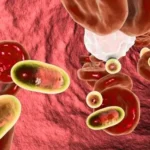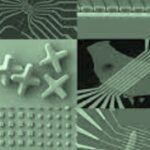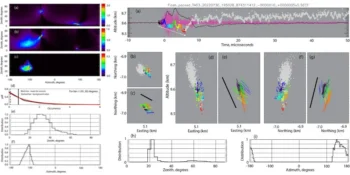In the vast realm of nanotechnology, it stands as a cornerstone, a transformative technique that enables the precise manipulation of matter at the nanoscale. This comprehensive exploration takes you on a journey through the remarkable world of nanolithography, revealing its profound significance, underlying principles, diverse applications, and promising prospects.
The Significance of Nanolithography
Nanolithography represents a pivotal tool in the nanotechnologist’s arsenal, allowing the creation of structures and patterns at the nanometer scale with unparalleled precision. Its significance lies in its ability to fabricate nanoscale devices, opening doors to groundbreaking advances in electronics, materials science, biology, and beyond.
Shrinking Technology
It has been instrumental in the relentless drive to shrink technology. As the size of electronic components decreases, the performance of devices improves, making them faster, more energy-efficient, and capable of handling massive amounts of data. It is the key to achieving this miniaturization.
Advancements in Materials Science
Materials science has been revolutionized by nanolithography. It allows scientists to engineer materials with nanoscale precision, tailoring their properties for specific applications. It is crucial in creating novel materials, from superhydrophobic surfaces to high-efficiency solar cells.
Biological Applications
Nanolithography isn’t limited to electronics; it has also found a place in biology and medicine. Researchers use it to create intricate patterns for cell cultures, study protein interactions, and develop biosensors for early disease detection. This interdisciplinary approach promises transformative advancements in healthcare.
Principles of Nanolithography
To grasp the full scope of nanolithography, one must understand the fundamental principles that govern this technique.
Photolithography
Photolithography, a widely used nanolithography technique, relies on the interaction of light with photosensitive materials. A mask or pattern blocks or allows light exposure, creating precise patterns on a substrate. This technique is the cornerstone of semiconductor fabrication.
Electron Beam Lithography
Electron beam lithography (EBL) takes precision to a new level. Instead of light, a focused electron beam is used to write patterns directly onto a substrate. EBL enables the creation of incredibly fine structures, making it indispensable for cutting-edge research and nanoelectronic device fabrication.
Scanning Probe Lithography
Scanning probe lithography (SPL) uses the sharp tip of a scanning probe microscope to write or etch nanoscale patterns. This technique is versatile and can be used on a variety of materials. It’s particularly valuable for research in nanoelectronics, nanophotonics, and nanomechanics.
Applications of Nanolithography
Nanolithography’s reach extends across various applications, fueling innovation in various fields.
Semiconductor Industry
The semiconductor industry relies heavily on nanolithography to manufacture integrated circuits (ICs) with ever-increasing transistor density. Advanced lithography techniques enable the production of smaller and more powerful computer chips. The semiconductor industry is at the forefront of nanolithography’s impact. The relentless demand for faster and more energy-efficient electronics drives constant innovation in lithographic techniques. These advancements underpin the production of ICs that power everything from smartphones to supercomputers.
Nanophotonics and Optoelectronics
It is crucial in creating nanophotonic devices, such as optical waveguides and photonic crystals. These devices have telecommunications, optical computing, and high-efficiency solar cell applications. The field of nanophotonics is revolutionizing our ability to manipulate and control light at the nanoscale. It is the tool that enables the creation of intricate photonic structures, leading to innovations in telecommunications, data storage, and energy harvesting.
Biotechnology and Medicine
Biotechnology uses nanolithography to create biosensors, DNA arrays, and microfluidic devices. These technologies enable rapid and accurate disease diagnosis, drug discovery, and personalized medicine. The intersection of nanolithography and biotechnology is a fertile ground for innovation. Researchers can create highly sensitive biosensors that detect minute quantities of biomolecules, aiding in early disease detection.
Nanomaterials and Nanomechanics
Researchers leverage nanolithography to engineer nanomaterials with tailored properties, advancing fields like materials science and nanomechanics. From ultra-strong materials to self-assembling nanostructures, it expands the possible boundaries. It enables materials scientists to push the boundaries of what is achievable at the nanoscale. Researchers can engineer materials with extraordinary properties by precisely controlling the arrangement of atoms and molecules. These materials find applications in aerospace, construction, and even consumer products.
Challenges and Future Prospects
While nanolithography has propelled innovation, it faces challenges and holds exciting prospects for the future.
Resolution Limits
The push for even smaller structures encounters resolution limits associated with the wavelength of light or the size of the probe tip. Overcoming these limits requires innovative techniques and approaches, such as extreme ultraviolet (EUV) lithography and helium ion beam lithography. The quest for ever-smaller structures is relentless, pushing the boundaries of what is physically possible. Researchers and engineers are constantly devising new strategies to bypass resolution limits and achieve nanoscale features that were once thought unattainable.
Scalability
As nanolithography advances, there is a growing need for scalable techniques that can be applied in mass production. Meeting this demand while maintaining precision is a significant challenge. Scalability is a critical consideration in nanolithography. While researchers can achieve incredible precision on a small scale, the challenge lies in translating these achievements into large-scale manufacturing processes. Developing scalable techniques that can produce nanoscale features consistently and cost-effectively is a major research and development focus.
Multidisciplinary Integration
The future of nanolithography lies in its integration with other disciplines. Combining nanolithography with biotechnology, artificial intelligence, and quantum computing will unlock new possibilities and drive innovation. The true potential of nanolithography lies in its ability to transcend disciplinary boundaries. By integrating nanolithography with other cutting-edge technologies and scientific fields, we can tackle complex challenges and unlock new realms of possibility.
The Future of Nanolithography
The future of nanolithography holds immense promise, with transformative developments on the horizon.
Nanoelectronics and Quantum Computing
As the semiconductor industry continues to push the limits of miniaturization, it will play a vital role in enabling nanoelectronic devices and quantum computing technologies. The future of computing is intrinsically linked to nanolithography. It will be at the forefront of innovation as we strive for smaller, faster, and more energy-efficient electronic devices. It will enable the creation of nanoelectronic components and quantum bits (qubits) that can revolutionize computing and data processing.
Advanced Materials and Nanomedicine
Nanolithography will facilitate the development of advanced materials for energy, environmental sustainability, and nanomedicine applications, further blurring the boundaries between scientific disciplines. The fusion of nanolithography and advanced materials science holds immense potential. From creating materials that capture and store renewable energy to engineering biocompatible materials for drug delivery, the impact on energy, healthcare, and the environment will be profound. It will be a driving force in these transformative developments.
Nanofabrication for Space Exploration
Nanolithography will be essential for developing miniaturized, high-performance components for space exploration missions. These components will enable smaller, more efficient spacecraft and instruments. The demands of space exploration are rigorous, requiring lightweight yet high-performance components. It will play a pivotal role in meeting these demands by enabling the fabrication of advanced materials and miniaturized devices for space missions. From propulsion systems to sensors, it will help us explore the cosmos more efficiently and effectively.
Conclusion
Nanolithography is a remarkable technique that has reshaped our world at the nanoscale. Its significance spans diverse fields, from electronics and materials science to biology and medicine. Understanding its principles and applications is crucial for appreciating the depth of its impact. As nanolithography continues to evolve, addressing challenges like resolution limits and scalability, it promises to unlock new frontiers in science, technology, and interdisciplinary collaboration.
The future illuminated by nanolithography is one where the nanoworld is shaped with precision, leading to unprecedented innovations that benefit society. It is the tool that empowers us to sculpt the nanoscale and forge a path toward a brighter and more technologically advanced future.










